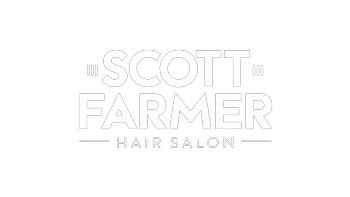How Often to Trim Hair: Expert Advice Revealed
Are you wondering how often to trim hair, keep it healthy, and promote growth?
You’re not alone. Many people struggle with finding the right balance between maintaining length and preventing split ends.
This comprehensive haircut guide will explore the importance of regular trims, provide expert advice on trimming frequency, and offer personalized recommendations based on your hair type and condition.
Prefer to Listen? Check Us Out On Soundcloud
Key Takeaways
- Trim hair every 6-12 weeks, depending on hair type and condition
- Regular trims prevent split ends and promote healthier hair growth
- Curly and color-treated hair may require more frequent trims
- Pay attention to signs like visible split ends or increased tangling
- Maintain healthy hair between trims with proper care and quality products

How often are you supposed to trim your hair?
To avoid split ends and promote hair growth, trim your hair every 6-12 weeks. The exact frequency depends on your hair type and condition. For straight or wavy hair, aim for every 8-12 weeks. Curly or color-treated hair may need trims every 6-8 weeks. Regular trims remove damaged ends, prevent split ends from traveling up the hair shaft, and encourage healthier growth.
The Benefits of Regular Hair Trims
Before we dive into how often you should be trimming hair in your hair, let’s discuss why regular trims are essential for maintaining healthy locks:
- Prevent split ends from traveling up the hair shaft
- Maintain a neat and polished appearance
- Promote healthier hair growth
- Reduce breakage and damage
- Improve overall hair texture and manageability
Regular trims are a crucial part of any hair care routine, regardless of your hair type or desired length.
Removing damaged ends gives the ends of your hair the best chance to grow strong and healthy.
How Often Should You Trim Your Hair?
The frequency of your hair trims depends on several factors, including your hair type, texture, and overall health. Here are some general guidelines to help you determine the ideal trimming schedule for your hair:
For Straight or Wavy Hair
You can typically go eight weeks or longer between trims if you have straight or wavy hair. Aim to get a trim every 8-12 weeks to maintain healthy ends and prevent split ends from forming.
For Curly or Coily Hair
Curly and coily hair types tend to be more prone to dryness and breakage, so they may require more frequent trims. Schedule curly hair for a trim every 6-8 weeks to keep your curls looking their best and prevent damage from spreading.
For Color-Treated or Chemically Processed Hair
If you regularly color or chemically treat your hair, you must be more diligent with your trimming schedule. Aim for a trim every 4-6 weeks to prevent damage and maintain the health of your treated locks.
For Long Hair
If you want to grow your hair longer, you might be tempted to skip trims altogether. However, regular trims are still essential for maintaining healthy length. Aim for a trim every 10-12 weeks, focusing on removing only the damaged ends to promote healthy growth.
Signs It’s Time for a Trim
While following a regular trimming schedule is essential, paying attention to your hair’s specific needs is crucial. Here are some signs that indicate it’s time for a trim:
- Visible split ends or frayed tips
- Increased tangling or difficulty brushing
- Dull or lifeless appearance
- Excessive shedding or breakage
- Loss of shape or style
If you notice any of these signs, it’s best to schedule a trim as soon as possible to prevent further damage and maintain your hair’s health.

Expert Insights: Professional Opinions on Hair Trims

Sarah Johnson, Master Stylist
“I recommend a trim every 6-8 weeks for most clients. This helps maintain the shape of their haircut and prevents split ends from traveling up the hair shaft. However, the exact frequency can vary depending on the individual’s natural hair, type, and styling habits.”

Scott Farmer, Master Stylist
Don’t fear regular trims if you’re trying to grow your hair. Removing damaged ends promotes healthier growth in the long run. I suggest scheduling a ‘micro-trim’ every 8-10 weeks, removing just a quarter-inch or less to keep the ends healthy without sacrificing length.”
Personalized Haircut Schedules Based on Hair Type
To help you create a personalized trimming schedule, let’s break down recommendations for different hair types and conditions:
Fine Hair
Fine hair is more prone to breakage and can appear limp if thin hair is left untrimmed for too long. Aim for a trim every 6-8 weeks to maintain volume and prevent split ends.
Thick Hair
Thick hair can often go longer between trims, but regular maintenance is essential to prevent heaviness and maintain shape. Schedule a trim every 8-10 weeks.
Damaged or Over-Processed Hair
More frequent trims are necessary if your hair is damaged from heat styling, chemical treatments, or environmental factors. Aim for a trim every 4-6 weeks to remove damaged ends and promote healthier growth.
Natural, Textured Hair
Natural, textured hair requires special care to maintain health and prevent breakage. Schedule a trim every 8-12 weeks, focusing on removing damaged or frayed ends.
Tips for Maintaining Healthy Hair Between Trims
While regular trims are essential, there are several steps you can take to keep your hair healthy between salon visits:
- Use a deep conditioning treatment once a week to nourish and hydrate your hair.
- Minimize heat styling and always use a heat protectant product when styling with heat.
- Sleep on a silk or satin pillowcase to reduce friction and prevent breakage.
- Avoid tight hairstyles that can cause tension and breakage.
- Use a wide-tooth comb or detangling brush to remove knots and tangles gently.
Incorporating these habits into your hair care routine can help maintain your hair’s health and extend the time between trims.

Product Recommendations for Healthy Hair
To keep your hair in top condition between trims, consider incorporating these high-quality products into your routine:
- Leave-in conditioner: Look for a lightweight formula that won’t weigh your hair down while providing essential moisture.
- Hair oil: A few drops can help seal moisture and add shine to your locks.
- Heat protectant spray: Always use a heat protectant before styling with hot tools to minimize damage.
- Protein treatment: Use a protein-rich hair mask once a month to strengthen your strands and prevent breakage.
Remember to choose products suitable for your specific hair type and concerns for the best results.

The Importance of Professional Haircuts
While it may be tempting to trim your hair at home and cut your hair yourself, there are several benefits to getting professional haircuts:
Precise cutting techniques that maintain your hair’s shape and style
Expert assessment of your hair’s health and personalized recommendations
Access to high-quality salon products and treatments
Opportunity to try new styles or techniques under professional guidance
Investing in regular professional haircuts can significantly improve your hair’s overall health and appearance.

Preventing Split Ends: Daily Care Tips
Split ends are common, but daily care can help reduce them.
Keep your hair hydrated with moisture-rich products like leave-in conditioners or serums, focusing on the ends.
Handle your hair gently after washing by blotting with a microfiber towel or cotton t-shirt instead of vigorous drying.
Avoid over-brushing, especially when wet, and use a wide-tooth comb or detangling brush to prevent split ends.
5 Tips for Preventing Split Ends
- Hydrate Your Hair: Use a leave-in conditioner or serum to moisten ends.
- Be Gentle While Drying: Blot hair with a microfiber towel instead of rubbing.
- Avoid Excessive Heat: Avoid hot tools and always use a heat protectant.
- Use Protective Hair Ties: Opt for silk scrunchies to reduce friction and prevent breakage.
- Minimize Tight Hairstyles: Avoid overly tight ponytails or buns that cause stress on hair strands.
Hair Trimming Myth Busting
Trimming your hair doesn’t make it grow faster but helps prevent split ends and breakage.
This means you can retain more length over time, giving the appearance of faster growth.
If your hair is healthy, you don’t need frequent trims. Healthy, well-maintained hair can often go up to 12 weeks or longer without a cut.
Listen to your hair and trim it when it shows signs of damage rather than following a fixed schedule.

Conclusion: Finding Your Perfect Trimming Schedule
Determining how often to trim your hair to avoid split ends and promote growth is a personal journey that depends on your hair type, condition, and styling habits.
By following the guidelines in this article and paying attention to your hair’s specific needs, you can develop a trimming schedule that keeps your locks healthy, strong, and beautiful.
Remember, regular trims are an investment in your hair’s long-term health.
Don’t be afraid to consult a professional stylist to create a personalized hair care plan that addresses your unique needs and goals.
Ready to give your hair the care it deserves?
Book an appointment with a professional stylist today and take the first step towards healthier, more beautiful hair!
Frequently Asked Questions
How often should you trim your hair if you want it to grow?
To promote hair growth, you should trim your hair every 10-12 weeks. Regular trims remove split ends and prevent breakage, allowing your hair to grow longer and healthier. While it may seem counterintuitive, trimming actually helps your hair grow by maintaining its overall health and preventing damage from traveling up the hair shaft.
How often should you trim your hair to avoid split ends?
To avoid split ends, you should trim your hair every 6-8 weeks. This frequency helps maintain hair health by removing damaged ends before they can split further up the hair shaft. However, the exact timing may vary depending on your hair type, styling habits, and overall hair health. Those with chemically treated or heat-styled hair may need more frequent trims.
How often do you really need to cut your hair?
The frequency of hair cuts depends on your hair type and style goals. On average, most people benefit from cutting their hair every 8-12 weeks. Short hairstyles may require cuts every 4-6 weeks to maintain shape, while those with long, healthy hair can stretch to 12-16 weeks between cuts. Regular trims help prevent split ends and maintain overall hair health.
How long should you wait between haircuts?
The ideal time between haircuts varies based on your hair type and style. For short hair, wait 4-6 weeks; for medium-length hair, 6-8 weeks; and for long hair, 8-12 weeks. However, these are general guidelines. Pay attention to your hair's condition – if you notice split ends or your style losing shape, it's time for a trim, regardless of the timeframe.
HOW TO CONNECT WITH SCOTT FARMER SALON ONLINE?
FOLLOW ON SOCIAL MEDIA
Please stay connected with us! Follow Scott Farmer Salon on Facebook and Instagram to see our latest work, get hair care tips, and stay updated on special offers and events.

CONTACT US
We would love to get to know you or answer any questions you may have. Please don’t hesitate to contact us.
Scott Farmer Hair Salon in Venice, FL: Expert haircuts, vibrant color, and personalized care for stunning transformations.

